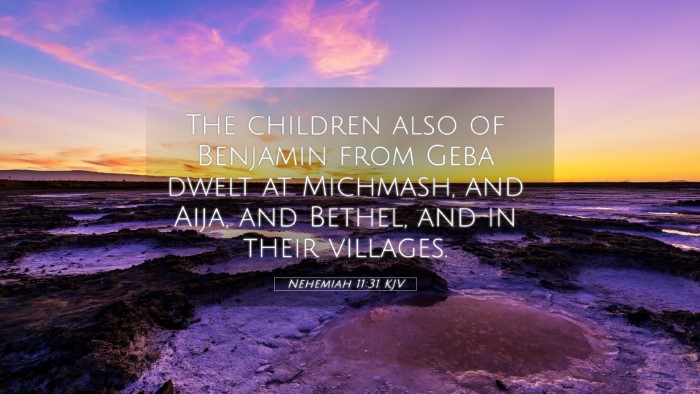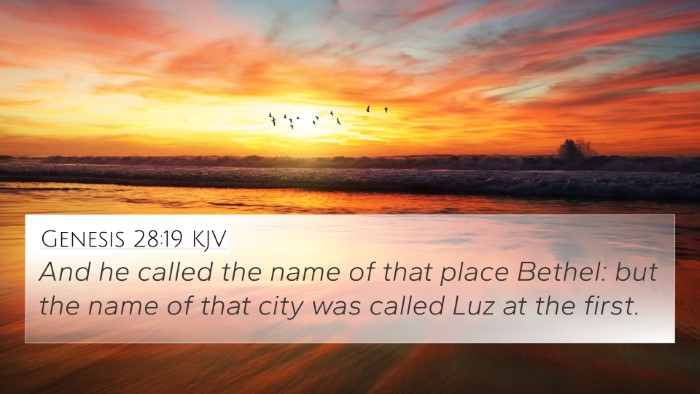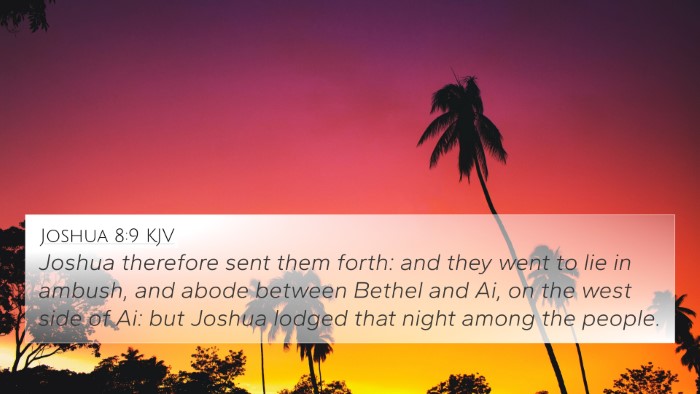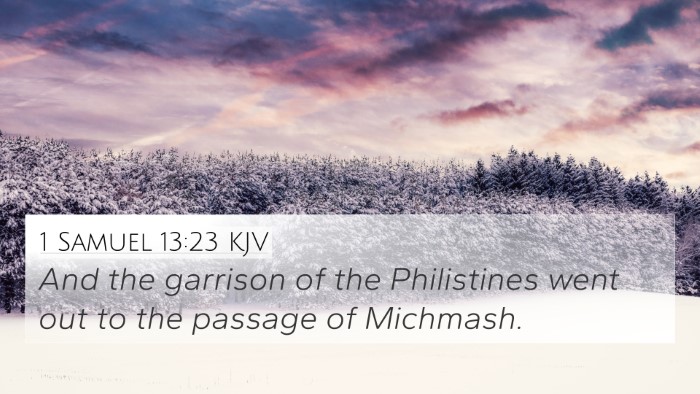Understanding Nehemiah 11:31
Nehemiah 11:31 states:
The men of Benjamin built up from Geba and Michmash, and from Aijalon to Adullam, ready for the return.
Context and Background
This verse is situated within the historical context of the return of the Israelites to Jerusalem after Babylonian exile. Nehemiah, serving as both a governor and a builder, organized the repopulation of Jerusalem and the surrounding areas. This particular section focuses on the relocation of the tribe of Benjamin and their effort to restore and fortify their cities.
Commentary Insights
Reputable public domain commentaries provide deeper insights into this verse:
- Matthew Henry: Henry emphasizes the importance of the tribes returning to their designated inheritances. The mention of cities from Geba to Adullam suggests a significant expansion of the land’s security, focusing on placements that were vital for both defense and prosperity.
- Albert Barnes: Barnes points out that this return signifies both repentance and restoration. He notes that the returning men of Benjamin were not just resettling but engaging in the reconstruction of a holy community committed to God's laws.
- Adam Clarke: Clarke interprets the specific mention of cities as indicative of strategic planning for community living. He suggests that this repopulation reflects a determined effort to fulfill God’s promises regarding the return and regeneration of His people.
Thematic Connections
This verse provides rich grounds for thematic Bible verse connections, highlighting themes of (1) restoration, (2) community engagement, and (3) the fulfillment of divine promise.
Bible Verse Cross-References
Nehemiah 11:31 can be connected through the following Bible verse cross-references:
- Jeremiah 29:10: This verse speaks of God's promise to bring His people back to their land after a period of captivity.
- Ezra 2:1: Lists the returnees from Babylon, setting a backdrop for the revitalization of Jerusalem.
- Nehemiah 7:6-73: This earlier chapter details the return of families and their roles, emphasizing community restoration.
- Zechariah 8:3: A prophetic message that illustrates God’s intention to return to Zion and dwell there, alluding to His people’s restoration.
- 1 Chronicles 9:3: Describing those who returned and how they established themselves in the land.
- Psalm 126:1-3: A song of ascents celebrating the return from captivity, mirroring the sentiments present in Nehemiah’s time.
- Isaiah 40:11: Highlights the gentle leading and gathering of God’s people, akin to the actions represented in Nehemiah.
Cross-Referencing Biblical Texts
The exploration of connections between Bible verses deepens understanding and allows for comparative Bible verse analysis. For example:
- The linkage between Nehemiah's organization of the returned exiles and the themes of community in Acts 2:44-47 emphasizes the ongoing narrative of God’s people gathering in unity.
- This verse’s focus on specific places mirrors Joshua's conquest narrative, highlighting God’s hand in the resettlement of His people.
- Citing additional contexts such as Hebrews 11:10 points to the overarching promise of a heavenly homeland, linking Old Testament promises to New Testament fulfillments.
How to Use Bible Cross-References
For those keen on delving deeper into Bible study, utilizing tools for Bible cross-referencing can enhance your understanding:
- A Bible concordance is useful for finding terms and themes that link various scriptures.
- Your Bible cross-reference guide can provide immediate connections without much prior knowledge.
- Engaging in cross-reference Bible study techniques will enable you to see the broader narrative and theological implications across different texts.
Conclusion
Nehemiah 11:31 marks a pivotal moment of renewal for Israel, echoed throughout scripture. Considering its implications through cross-references enables deeper theological reflection and offers valuable insights into God’s unchanging promise and commitment to His people.











